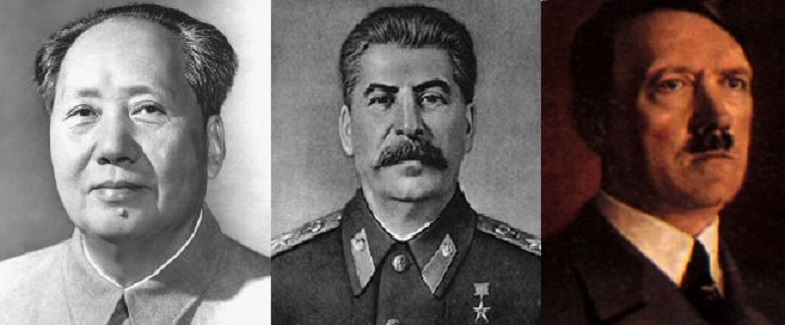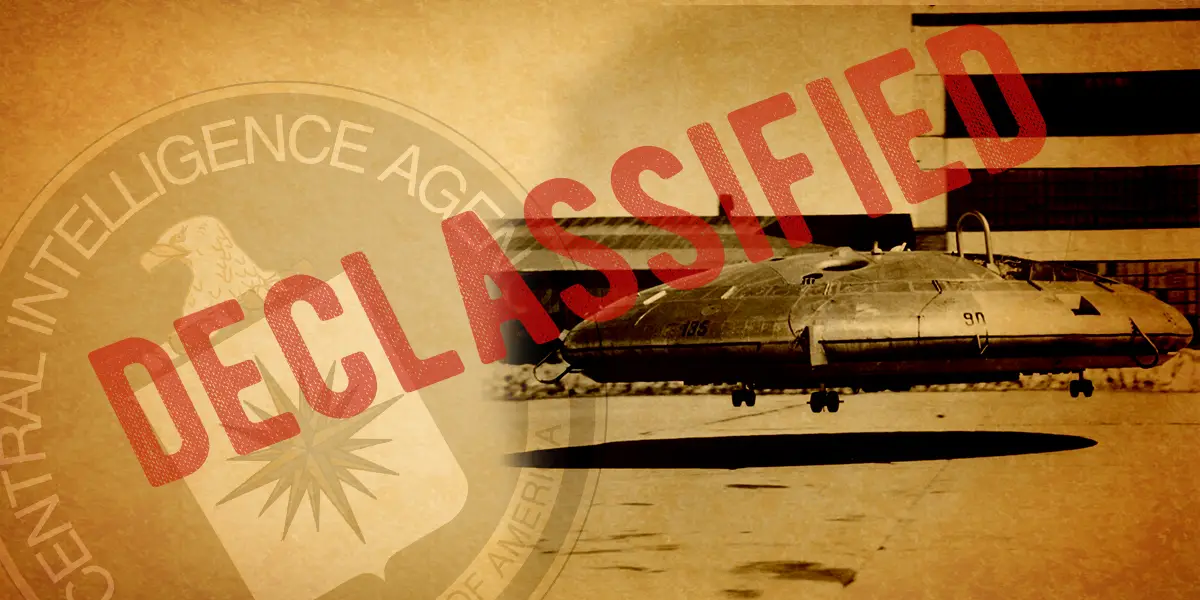Illegitimate regimes can stay in power for decades, but only with an army of Stormtroopers and the Gestapo to keep a scared population under control.
Tag: Nazis
Uncovering the Mystery: Could Nazi Technology Be the Origin of UFOs?
In the vast expanse of our universe, we’ve often wondered about the unidentified flying objects, or UFOs, that have fascinated us for decades. Are they from distant galaxies or perhaps even other dimensions? While the question remains unanswered, some intriguing theories suggest that the origin of UFOs might be closer to home than we think. In this exploration, we’ll look into the possibility that the Nazis, driven by their relentless pursuit of advanced technology during World War II, could be linked to the mysterious UFO phenomena.
The Nazis’ Obsession with Advanced Technology
To understand the Nazi-UFO connection, we must first acknowledge the Nazis’ obsession with cutting-edge technology. During World War II, the Third Reich delved deep into research and development, pushing the boundaries of scientific exploration. They were known for their ambitious projects, from the V-2 rocket to the development of advanced aircraft like the Messerschmitt Me 262.
One compelling theory proposes that the Nazis may have acquired technology that could have been the basis for UFOs from sources deep within the Earth. Proponents of this theory claim that the Nazis believed in the existence of a hollow Earth, a subterranean world with advanced civilizations and resources. While this idea might sound far-fetched, it aligns with their fascination with uncharted territories and the unknown.
The Hollow Earth Hypothesis
The Hollow Earth hypothesis posits that within our planet exists a vast, hollow cavity inhabited by an advanced civilization. Nazis, particularly Heinrich Himmler and his secret Ahnenerbe organization, were rumored to be interested in this theory. They believed that the entrance to this underground world might be found at the North Pole.
Some speculate that the Nazis’ quest for advanced technology led them to seek alliances with these inner Earth inhabitants. Could this have resulted in the exchange of knowledge and technology, possibly contributing to the UFO sightings we’ve witnessed in recent decades?
Operation Paperclip and Roswell
Another intriguing twist in the Nazi-UFO connection involves Operation Paperclip, a secret American operation that recruited German scientists, engineers, and researchers after World War II. These scientists had been involved in the development of advanced technologies for the Nazi regime.
Roswell, New Mexico, has long been associated with UFO sightings and conspiracy theories. Some theorists suggest that the infamous Roswell incident of 1947, where an unidentified object crashed, could have been a result of testing Nazi technology by scientists tied to Operation Paperclip. This theory proposes that the United States government was trying to reverse-engineer advanced Nazi technology, leading to the accidental crash of a prototype aircraft.
Foo Fighters: Nazi UFOs in Action?
One of the most perplexing aspects of the Nazi-UFO connection revolves around the mysterious “Foo Fighters” reported by Allied pilots during World War II. These strange glowing orbs appeared alongside Allied aircraft during combat missions, defying conventional explanation. Some speculate that these Foo Fighters might have been experimental Nazi aircraft or drones equipped with advanced propulsion systems and weaponry.
Although the term “Foo Fighters” has since been associated with the iconic rock band, it originally referred to these puzzling aerial phenomena. The sightings of these objects remain largely unexplained, leaving room for speculation about their potential Nazi origin.
The Challenges of Unraveling the Mystery
While these theories present compelling possibilities, it’s essential to approach them with a critical eye. The lack of concrete evidence connecting the Nazis directly to UFOs leaves room for skepticism. History is often riddled with rumors, misinterpretations, and conspiracy theories.
Additionally, the technological limitations of the time raise questions about whether the Nazis could have developed aircraft with capabilities that align with modern UFO sightings. It’s crucial to consider that UFO sightings have evolved over the years, with some contemporary reports suggesting technology far beyond what was available in the mid-20th century.
Closing Thoughts
The idea that UFOs might have a Nazi origin adds an intriguing layer to the mystery that has captivated our imaginations for generations. While the Nazi regime’s fascination with advanced technology and their involvement in Operation Paperclip raises eyebrows, we must remain cautious about drawing definitive conclusions.
The world of UFOs remains a realm of mystery, where the line between fact and fiction often blurs. While the connection between the Nazis and UFOs may never be definitively proven, it serves as a testament to humanity’s relentless pursuit of knowledge and the enduring intrigue of the unknown. As we continue to explore the universe and our own planet’s mysteries, the truth about UFOs may one day reveal itself, providing answers to questions that have fascinated us for decades. Until then, the possibility of a Nazi-UFO connection remains one of the countless mysteries that fuel our curiosity about the universe and our place within it.
The Inalco House – Hitler’s Potential South American Hideout
Throughout history, certain events and personalities have captivated the collective imagination, leaving behind a legacy shrouded in mystery and controversy. One such figure is Adolf Hitler, the notorious dictator whose actions during World War II and the Holocaust have forever stained human history. But what if the story we know about Hitler’s demise is not entirely accurate? What if there exists a possibility that he managed to escape, finding refuge in an unlikely place like the Inalco House? This article delves into the intriguing theory surrounding Hitler’s potential use of the Inalco House as a hideout and explores the fascinating revelation that a Russian DNA test identified his supposed skull as belonging to a woman.
The Inalco House: A Place of Intrigue
The Inalco House, also known as Residencia Inalco, is a mansion located in Patagonia, Argentina. It was built in March 1943 by architect Alejandro Bustillo who created the original plans of the house. The lot was bought from Bustillo by Enrique García Merou, a Buenos Aires lawyer linked to several German-owned companies that allegedly collaborated in the escape to Argentina of high Nazi party members and SS officials. The mansion is similar to Hitler’s refuge in the Alps, with bedrooms connected by bathrooms and walk-in closets and a tea house located by a small farm.
Hitler’s Possible Escape
The mainstream historical narrative dictates that Adolf Hitler committed suicide on April 30, 1945, in his Berlin bunker. However, there have been numerous theories suggesting that Hitler managed to evade capture and flee to a foreign land. Numerous factors contribute to the plausibility of Hitler’s escape, such as the chaotic circumstances of his alleged death and the subsequent discovery of his remains.
The Mystery of the Skull
In 1945, Soviet forces discovered charred remains, including a skull, in the vicinity of Hitler’s bunker. For decades, these remains were preserved and studied in secrecy by the Russian government. In 2009, an international team of scientists was granted access to the skull for DNA testing. To their astonishment, the results indicated that the skull belonged to a woman under the age of 40, challenging the long-held belief that it was Hitler’s.
The DNA Test Controversy
The revelation of the skull’s DNA test results ignited a firestorm of controversy among historians, researchers, and the public. Skeptics argue that the skull’s authenticity was compromised over the years due to mishandling or mislabeling. Others postulate that the Soviet government deliberately misidentified the remains to conceal Hitler’s true fate or aid his potential escape. While the debate rages on, the discovery of the skull’s true origin adds another layer of complexity to the possibility of Hitler’s survival.
The Inalco House Connection
The theory connecting Hitler to the Inalco House emerged in the 1990s, when documents detailing the architectural plans and construction of the mansion came to light. These documents revealed the involvement of various German engineers, many of whom had direct connections to Hitler’s inner circle. The intricate design of the Inalco House, with its secret chambers and hidden tunnels, further deepened the intrigue surrounding the property. Proponents of the theory propose that Hitler may have used this secluded location to evade capture and start a new life under a hidden identity.
Supporting Evidence and Counterarguments
While the Inalco House theory captures the imagination, it is crucial to assess the supporting evidence alongside counterarguments to maintain a balanced perspective. Some proponents argue that Hitler’s obsession with his image and his ideological belief in the superiority of the Aryan race would have made living in secrecy for an extended period unbearable. Moreover, the extensive surveillance and intelligence efforts of Allied forces after World War II make it challenging to conceive of Hitler successfully eluding their grasp.
Nonetheless, advocates of the theory suggest that Hitler’s ability to manipulate appearances and his immense resources could have facilitated his escape and subsequent reclusive existence. They contend that the Inalco House, with its secluded location and hidden compartments, provided a secure environment where Hitler could maintain a low profile.
Final Thoughts
The theory that Adolf Hitler may have sought refuge within the Inalco House remains a controversial and tantalizing topic in historical discussion. While it is essential to approach this theory with skepticism and critical analysis, examining the connections between Hitler and the architectural features of the Inalco House provides insight into the potential realities of his escape.
The evidence of German involvement in the design and construction of the Inalco House raises intriguing questions about the intended purpose and occupants of this remote mansion. The presence of secret rooms and hidden passages suggests an environment designed for concealment and evasion.
Furthermore, the results of a Russian DNA test, which identified the supposed skull of Hitler as belonging to a woman, cast doubt on the official account of his death. This revelation necessitates a reevaluation of the events surrounding Hitler’s alleged suicide and opens up the possibility that he may have orchestrated an escape, using his resources and cunning to evade capture.
The truth about Hitler’s fate remains elusive, leaving room for speculation, debate, and continued historical inquiry. The Inalco House serves as a haunting reminder of the mysteries that surround Hitler’s legacy, demonstrating that even the most infamous figures can evade definitive conclusions and continue to captivate our collective imagination.
History’s Tyrants: Mao, Stalin, and Hitler – Gun Confiscation and Its Devastating Aftermath
Examining the historical examples of Mao Zedong, Joseph Stalin, and Adolf Hitler provides us with profound insights into the consequences of gun confiscation by oppressive leaders. This article delves into their regimes and explores their approaches to gun control, shedding light on the consequences that followed.
Mao Zedong’s China
Mao Zedong, the founder of the People’s Republic of China, implemented strict gun control policies to solidify his power and suppress dissent. Private firearm ownership was heavily regulated, making it difficult for citizens to possess weapons. This disarmament left the population defenseless against the excesses of Mao’s regime.
Aftermath: The disarmament of the Chinese population had dire consequences. With citizens left defenseless against the excesses of the regime, Mao’s Great Leap Forward and Cultural Revolution resulted in the deaths of tens of millions. The absence of firearms allowed these atrocities to persist unchallenged, highlighting the grave dangers of disarming a populace under oppressive rule.
Joseph Stalin’s Soviet Union
Joseph Stalin implemented stringent gun control measures in the Soviet Union, severely limiting private firearm ownership. These policies were justified as necessary to maintain control, suppress dissent, and prevent potential uprisings.
Aftermath: The disarmament of the Soviet population played a significant role in Stalin’s consolidation of power and the establishment of his totalitarian regime. Millions of people were subjected to forced labor, persecution, and mass executions. The lack of access to firearms stifled any potential resistance, enabling the perpetuation of an oppressive system.
Adolf Hitler’s Germany
Adolf Hitler’s Nazi Germany exploited gun control as a means to consolidate power and further their oppressive ideology. The Weapons Act of 1938 effectively disarmed targeted groups, particularly Jews, as part of a broader strategy to facilitate their persecution and eventual genocide.
Aftermath: Disarming targeted groups removed any means of self-defense and allowed Hitler’s regime to carry out the Holocaust with little resistance. The consequences were unimaginably tragic, emphasizing the dangers of government-mandated disarmament and the suppression of individual rights.
The historical examples of Mao Zedong, Joseph Stalin, and Adolf Hitler vividly illustrate the tragic consequences of gun confiscation by oppressive leaders. In each case, disarmament allowed these dictators to consolidate power, perpetrate mass atrocities, and maintain oppressive regimes.
These examples serve as stark warnings, reminding us of the dangers inherent in disarming a population and undermining individual rights. They emphasize the critical importance of safeguarding the fundamental right to self-defense and the need for vigilant protection of human rights in the face of authoritarianism.
Operation Paperclip: The Recruitment of Nazi Scientists after World War II
Operation Paperclip was a secret program conducted by the United States government following World War II to recruit German scientists, engineers, and technicians, including some involved in Nazi Germany’s war effort. The operation aimed to capitalize on the scientific expertise of these individuals, primarily in fields such as aerospace, rocketry, and intelligence gathering. While it undoubtedly contributed to significant advancements in science and technology, Operation Paperclip remains a subject of debate and controversy due to ethical concerns and the questionable pasts of some recruited scientists.
Origins and Objectives
In the closing stages of World War II, the Allies realized the significant scientific advancements made by Germany under the Nazi regime. Fearing that valuable intellectual capital would fall into the hands of the Soviet Union, the United States initiated Operation Paperclip. This operation, which lasted from 1945 to 1959, sought to identify and recruit German scientists, particularly those specializing in rocketry, aerospace, and biological warfare.
The Recruitment Process
Under Operation Paperclip, U.S. military intelligence officers actively scoured Germany for individuals who possessed valuable scientific knowledge. Notable figures such as Wernher von Braun, a renowned rocket scientist, and Arthur Rudolph, a leading engineer, were among those targeted for recruitment. While many of these scientists willingly collaborated with the Americans, others were coerced into cooperation to avoid prosecution for their involvement in war crimes.
Controversial Aspects
The recruitment of German scientists through Operation Paperclip was not without its ethical dilemmas. Many of these scientists had been members of the Nazi Party and had used forced labor during the war. Some had even conducted experiments on concentration camp prisoners. These actions raised significant moral questions about whether their knowledge and expertise should outweigh their crimes.
Public Knowledge and Legacy
Operation Paperclip was shrouded in secrecy for several decades, with the U.S. government denying its existence until the 1970s. The project’s details only became public knowledge through the efforts of investigative journalists and historians. This revelation sparked public debate, criticism, and calls for transparency regarding the recruitment process and the scientists’ wartime activities.
Scientific Advancements and Cold War Competition
Operation Paperclip undeniably played a crucial role in advancing scientific knowledge and technology in the United States. German scientists brought expertise in areas such as rocketry, aircraft design, and guidance systems. This knowledge became vital in the emerging Cold War era, as the United States and the Soviet Union engaged in a race to achieve technological supremacy. The contributions of Operation Paperclip scientists, particularly in the development of the American space program, were substantial.
Ethical Considerations and Historical Perspective
Critics argue that Operation Paperclip compromised the principles of justice and accountability. By recruiting scientists involved in war crimes and overlooking their past actions, the operation raised questions about the United States’ commitment to justice and the integrity of scientific pursuit. However, proponents contend that the operation’s benefits to American scientific advancements and the containment of the Soviet Union justified the compromises made.
Final Thoughts
Operation Paperclip remains a complex and controversial episode in history, characterized by the ethical dilemma of trading justice for scientific and technological progress. While the operation undeniably contributed to significant advancements and bolstered American capabilities during the Cold War, its moral implications continue to be debated. The story of Operation Paperclip serves as a reminder of the delicate balance between scientific progress and the preservation of moral principles in times of conflict.




